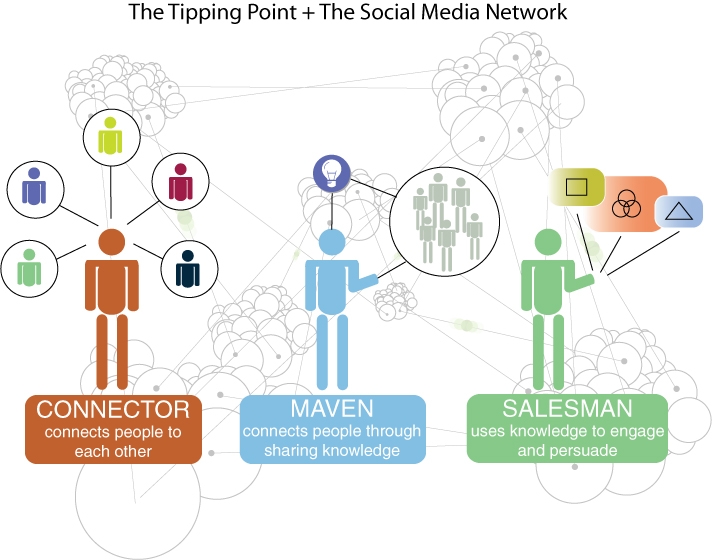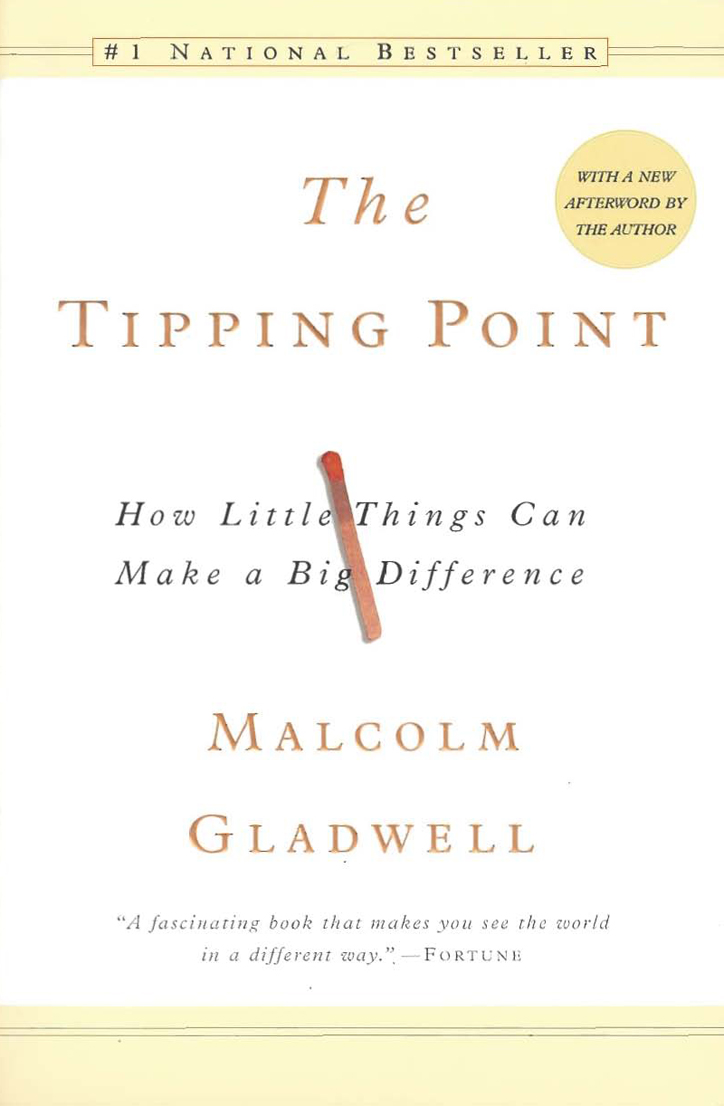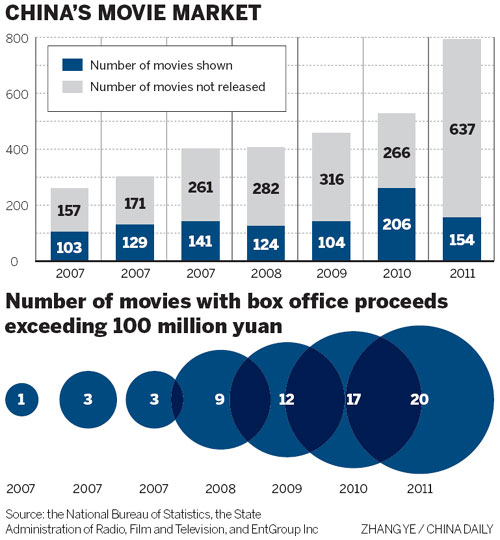Reviewed your Brand Marketing 101?
If you were absent, click the link below:
A Guide on How to Make 200 Million Dollars Out of 5 Million - Part I: Miracle Overview & Brand Marketing 101: The Tipping Point.You Can also scroll down to the end of this blog to read the quiz that helps you get the general idea of the Tipping Theory I apply for analysis.
Before continue, I would again recommend you to read the previous blog to learn what was going on around the film Lost in Thailand in the past 2 months.
*** *** ***
Sell Film like A FMCG?!
With our rich background knowledge, we can finally start analyzing this milestone Chinese film. It is
no doubt a winner from integration marketing and the way it markets exactly conforms
to Gladwell’s “Law of the Few” – covering all three key characters throughout
the marketing process. In an article on The
Bund – one of the most influential periodicals, Haipeng Li, the representative
of Enlight’s marketing team, tells the journalists: through research they realized
that “film moves even faster than the FMCG (fast moving consumer goods e.g.
milk)” (Li, "Tai Jiong: Sell Movie as a FMCG").


According to Li, films on the market (on screen, in theaters) normally have a consumption period of one week, some of them can lengthen the period to three weeks, but Lost in Thailand made it to five weeks. How did they make the audiences – the target market – to accept them in such a short period? Li said that they adopted the marketing strategy of selling FMCG: “if there is something we started out right, it is to sell film like FMCG” (Li, "Tai Jiong: Sell Movie as a FMCG"). The so-called FMCG marketing system, what they did, was exactly utilizing the connectors and mavens. While other film marketing team normally has ten distributors, the Lost in Thailand marketing team used eighty. These eighty people were the very first and key connectors of this epidemic.
The Primary Connectors: Creating the Best Ad Content and Manipulate the Media
Enlight’s distributors are set up in the major cities like Beijing, Shanghai, and they are in duty of both the city and the radiant provinces/areas close by. These 80 distributors covered the top 100 cities with the highest box office. More importantly, they are set up in their cities and are extremely well-connected with local marketing channels on different platforms. Therefore the plans these distributors come up with were splendid because they are normally anti-intuitive. One example is that a distributor in Zhengzhou, He Nan Province, proposed that a local “Minsheng” (meaning people’s lives) program – a form of informal local news which does not exist in the U.S. broadcast program genre – has ridiculously high ratings “even though it just talks about Zhang’s cat died, or the Lis divorced”, why don’t they do a product placement in that program? The whole team was shocked by the unprecedented placement, and after research they ended up placing Lost in Thailand in similar Minsheng programs in more than 120 broadcast networks throughout China (Yin, "Tai Jiong's Marketing Strategy: More Than Enough Marketing Materials Plus Word of Mouth").
Brand Resonance Mode
 |
| From Kevin Lane Keller's Brand Resonance Model from Strategic Brand Management (1998 & 2002, Prentice Hall) |
Manipulate the Best Media
The Enlight Media Group – the investor, production studio, and distribution studio of Lost in Thailand – has established probably the most mature and complicated movie distribution network throughout 120 cities in China for the past 15 years, and it possesses an incomparable integration marketing advantage because of their cultivated multi-platforms in TV networks and programs, off-line event cooperation, theatrical release channels, and internet marketing. This time for Lost in Thailand, they explored and exploited every single corner on these platforms. These eighty distributors are the explorer, the exploiters, and the connectors. These connectors connected both tradition media and new media on hundreds of TV networks, over 1,200 TV channels, on subway trains, buses, airports, pharmacies, hospitals, college campuses, trains, and airplanes (Li, "Tai Jiong: Sell Movie as a FMCG"). What are these media ports that the connectors connected? They are exactly the mavens where people go for information. In my next blog, I will look into how these primary mavens contribute to the box office miracle, and more importantly how traditional media and new (social) media differentiate from and cooperate with each other to produce the optimal effect.
*** References ***
Li,
Hui. "Tai Jiong: Sell Movie as a
FMCG." Trans. Jie Luo. The Bund 05 Feb. 2013: n. pag. The
Bund. Feb. 2013. Web. 14 Feb. 2013.
<http://www.bundpic.com/2013/02/20891.shtml>.
Yu,
Yin. "Tai Jiong's Marketing
Strategy: More Than Enough Marketing Materials Plus Word of Mouth." Trans.
Jie Luo. Evening Times [Shanghai] 04 Jan. 2013, A2 sec.:
A2-02. Evening Times. Web. 13 Feb. 2013. <http://newspaper.jfdaily.com/xwwb/html/2013-01/04/content_950598.htm>.
***
Great! Now all of you are ready for the quiz.
Q1: Name the Three Rules of Epidemic.
Q2: Explain who are the three roles in the Law of the Few and how do they function.
Bonus #1: The total box office revenue for the Chinese comedy Lost in Thailand already reached 20 times its production cost. True or False?
Bonus #2: It is the first time Xu Zheng (the director, screenwriter, and main actor for Lost in Thailand (a.k.a Tai Jiong, 泰囧)) ever direct a film. True or false?
*** *** ***
I hope you all enjoyed your quiz. And feel free to check answers right away:
Q1: Name the Three Rules of Epidemic.
1. the Law of the Few; 2. the Stickiness Factor; 3. the Power of Context.
Q2: Explain who are the three roles in the Law of the Few and how do they function.
1. Connectors; 2. Mavens; 3. Salesmen. Connectors are those people who are the centers of social gravity, who are connected to many people. They can easily get a large proportion of people to know about what's going on. Mavens are the information sources. They are people whom others go to for information and details. They are enthusiastic to share what they know and the only thing a maven does not do is to persuade - which makes one a salesman. A salesman not necessarily persuades people all the time, but what he or she say and how he/she act results to be persuasive and causes actions.
Bonus #1: The total box office revenue for the Chinese comedy Lost in Thailand already reached 20 times its production cost. True or False?
FALSE. Total box office flipped 40 times its investment (production cost).
Bonus #2: It is the first time Xu Zheng (the director, screenwriter, and main actor for Lost in Thailand (a.k.a Tai Jiong, 泰囧)) ever direct a film. True or false.
TRUE.











